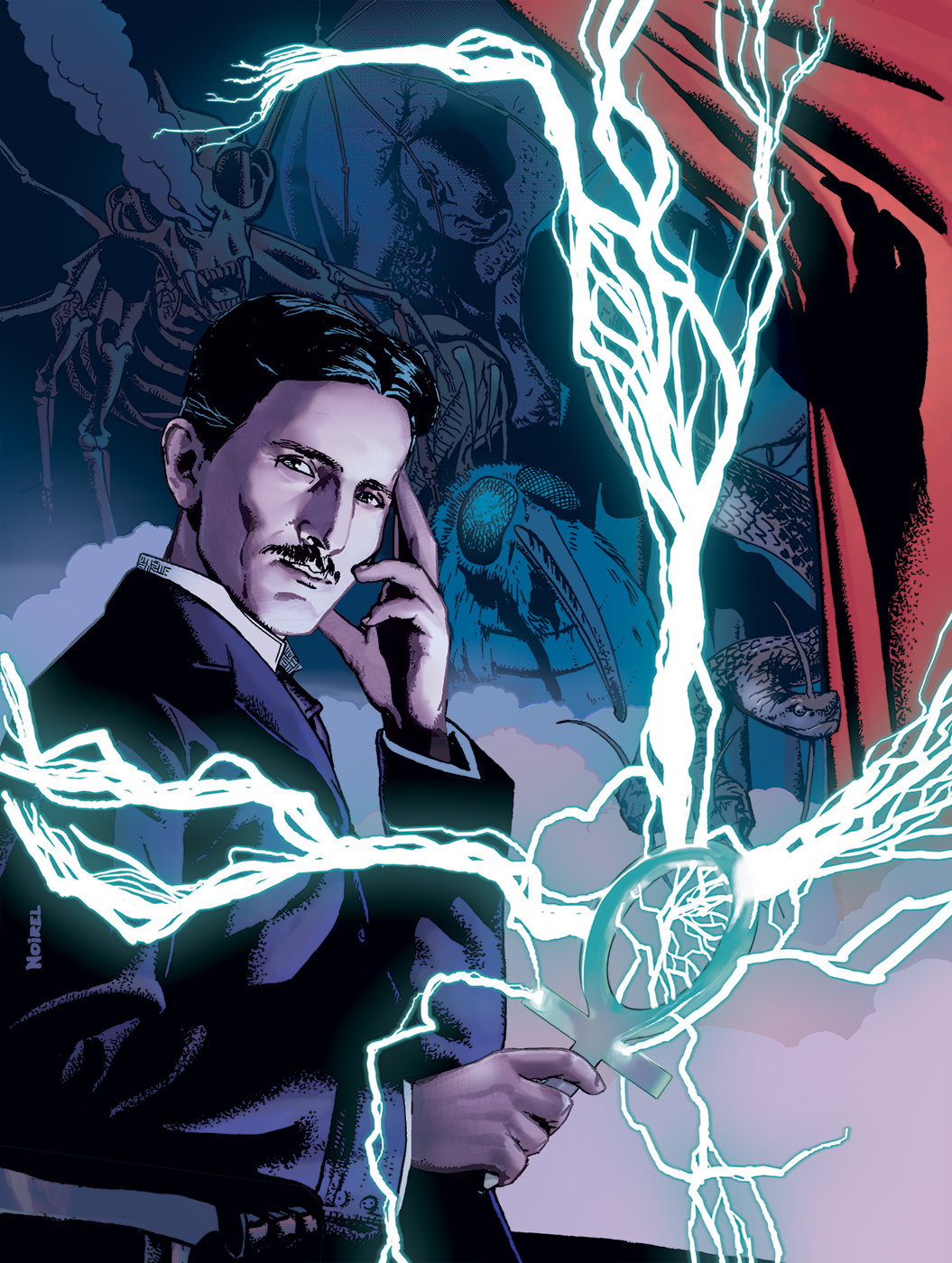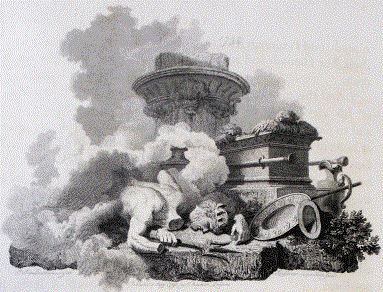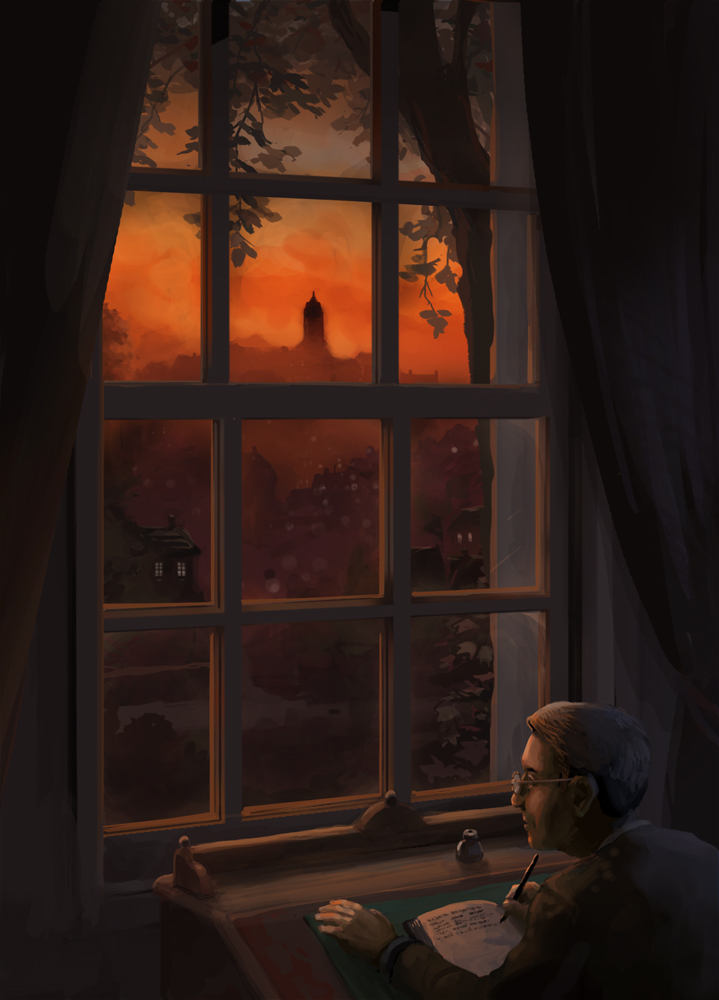|
Necronomicon (Nox Arcana Album)
''Necronomicon'' is the second album by Neoclassical darkwave/ dark ambient musical duo Nox Arcana published by Monolith Graphics on October 10, 2004. The music is inspired by the stories of horror writer H. P. Lovecraft and is a tribute to the Cthulhu Mythos. Theme Orchestra, string instruments, drums, pipes, guitars and choirs are accented by ominous chanting, strange sound effects and brief narratives that combine to tell the story of an alchemist who dares to raise an ancient race of otherworldly beings. The "language of the Old Ones" developed by Lovecraft as a literary plot element but considered by many to be unpronouncable, is effectively spoken aloud by Joseph Vargo on several of the tracks. Vargo, who is a huge fan of Lovecraft's work, also illustrated the CD packaging to appear as he imagined the famed fictional book to be from Lovecraft's descriptions. A hidden track on the CD also contains the phrase "Klaatu barada nikto", a well-known quote from the film ''The ... [...More Info...] [...Related Items...] OR: [Wikipedia] [Google] [Baidu] |
Nox Arcana
Nox Arcana is the American neoclassical dark wave, dark ambient musical project of Joseph Vargo. It was founded in 2003 as a duo with William Piotrowski, who left in 2008 to pursue a career in film score composing but still acts as its studio engineer whereas Vargo continued on as a solo act under the name. The name in Latin translates to "mysteries of the night." All of Nox Arcana's music is released independent music, independently on the Monolith Graphics label, a publishing company owned by Vargo. With their third album, Nox Arcana became a ''Billboard Magazine, Billboard'' Top Ten charting artist in the holiday genre. Concept Nox Arcana specializes in concept albums based on original stories, as well as gothic fiction and classic horror literature Some of their albums also make reference to medieval themes and ancient mythology. In addition to the storytelling aspect of each album, hidden puzzles and interactive quests are incorporated into the album artwork and into the m ... [...More Info...] [...Related Items...] OR: [Wikipedia] [Google] [Baidu] |
Alchemist
Alchemy (from Arabic: ''al-kīmiyā''; from Ancient Greek: χυμεία, ''khumeía'') is an ancient branch of natural philosophy, a philosophical and protoscience, protoscientific tradition that was historically practiced in Chinese alchemy, China, Rasayana, India, the Alchemy and chemistry in medieval Islam, Muslim world, and Europe. In its Western form, alchemy is first attested in a number of pseudepigraphical texts written in Egypt (Roman province), Greco-Roman Egypt during the first few centuries AD.Principe, Lawrence M. The secrets of alchemy'. University of Chicago Press, 2012, pp. 9–14. Alchemists attempted to purify, mature, and perfect certain materials. Common aims were chrysopoeia, the transmutation of "base metals" (e.g., lead) into "noble metals" (particularly gold); the creation of an Elixir of life, elixir of immortality; and the creation of Panacea (medicine), panaceas able to cure any disease. The perfection of the human body and soul was thought to result f ... [...More Info...] [...Related Items...] OR: [Wikipedia] [Google] [Baidu] |
Blackthorn Asylum
''Blackthorn Asylum'' is the eleventh album by dark ambient duo Nox Arcana. The musical theme is described as being "set in an abandoned sanitarium for the criminally insane where the doctors conducted horrible experiments on the inmates." Nox Arcana once again pays homage to H.P. Lovecraft as they did with their second album ''Necronomicon'', stating "We set ''Blackthorn Asylum'' in the 1930s and revisit the dark domain of H.P. Lovecraft. The plot builds upon Lovecraft’s short story " From Beyond" and adds some creepy new twists." And, as with almost every other album this band has released, this album conceals a puzzle, along with a storyline that expounds upon Lovecraft's story. Track listing # "Legacy of Darkness" — 2:09 # "Blackthorn Asylum" — 3:12 # "Sanitarium Gates" — 3:06 # "Abandoned" — 2:54 # "Threshold of Madness" — 3:41 # "Tapestry of Decay" — 3:06 # "Hidden Horrors" — 2:32 # "When Darkness Falls" — 3:24 # "Shock Treatment" — :55 # "Fractured Me ... [...More Info...] [...Related Items...] OR: [Wikipedia] [Google] [Baidu] |
Demons
A demon is a malevolent supernatural entity. Historically, belief in demons, or stories about demons, occurs in religion, occultism, literature, fiction, mythology, and folklore; as well as in media such as comics, video games, movies, anime, and television series. Belief in demons probably goes back to the Paleolithic age, stemming from humanity's fear of the unknown, the strange and the horrific. ''A Dictionary of Comparative Religion'' edited by S.G.F. Brandon 1970 In ancient Near Eastern religions and in the Abrahamic religions, including early Judaism and ancient-medieval Christian demonology, a demon is considered a harmful spiritual entity which may cause demonic possession, calling for an exorcism. Large portions of Jewish demonology, a key influence on Christianity and Islam, originated from a later form of Zoroastrianism, and was transferred to Judaism during the Persian era. Demons may or may not also be considered to be devils: minions of the Devil. In many tr ... [...More Info...] [...Related Items...] OR: [Wikipedia] [Google] [Baidu] |
Gods
A deity or god is a supernatural being who is considered divine or sacred. The ''Oxford Dictionary of English'' defines deity as a god or goddess, or anything revered as divine. C. Scott Littleton defines a deity as "a being with powers greater than those of ordinary humans, but who interacts with humans, positively or negatively, in ways that carry humans to new levels of consciousness, beyond the grounded preoccupations of ordinary life". Religions can be categorized by how many deities they worship. Monotheistic religions accept only one deity (predominantly referred to as "God"), whereas polytheistic religions accept multiple deities. Henotheistic religions accept one supreme deity without denying other deities, considering them as aspects of the same divine principle. Nontheistic religions deny any supreme eternal creator deity, but may accept a pantheon of deities which live, die and may be reborn like any other being. Although most monotheistic religions traditionally ... [...More Info...] [...Related Items...] OR: [Wikipedia] [Google] [Baidu] |
Great Old Ones
American author H. P. Lovecraft (1890–1937) created a number of fictional deities throughout the course of his literary career. These entities are usually depicted as immensely powerful and utterly indifferent to humans who can barely begin to comprehend them, though some entities are worshipped by humans. These deities include the "Great Old Ones" and extraterrestrials, such as the "Elder Things", with sporadic references to other miscellaneous deities (e.g. Nodens). The "Elder Gods" are a later creation of other prolific writers who expanded on Lovecraft's concepts, such as August Derleth, who was credited with formalizing the Cthulhu Mythos. Most of these deities were Lovecraft's original creations, but he also adapted words or concepts from earlier writers such as Ambrose Bierce, and later writers in turn used Lovecraft's concepts and expanded his fictional universe. Great Old Ones An ongoing theme in Lovecraft's work is the complete irrelevance of humanity in the face of t ... [...More Info...] [...Related Items...] OR: [Wikipedia] [Google] [Baidu] |
Cthulhu
Cthulhu is a fictional cosmic entity created by writer H. P. Lovecraft. It was first introduced in his short story "The Call of Cthulhu", published by the American pulp magazine ''Weird Tales'' in 1928. Considered a Great Old One within the pantheon of Lovecraftian cosmic entities, this creature has since been featured in numerous popular culture references. Lovecraft depicts it as a gigantic entity worshipped by cultists, in the shape of a green octopus, dragon, and a caricature of human form. The Lovecraft-inspired universe, the Cthulhu Mythos, where it exists with its fellow entities, is named after it. Etymology, spelling, and pronunciation Invented by Lovecraft in 1928, the name Cthulhu was probably chosen to echo the word ''chthonic'' (Ancient Greek "of the earth"), as apparently suggested by Lovecraft himself at the end of his 1923 tale "The Rats in the Walls". The chthonic, or earth-dwelling, spirit has precedents in numerous ancient and medieval mythologies, often guard ... [...More Info...] [...Related Items...] OR: [Wikipedia] [Google] [Baidu] |
Nyarlathotep
Nyarlathotep is a fictional character created by H. P. Lovecraft. The character is a malign deity in the Cthulhu Mythos, a shared universe. First appearing in Lovecraft's 1920 prose poem "Nyarlathotep", he was later mentioned in other works by Lovecraft and by other writers. Later writers describe him as one of the Outer Gods, an alien pantheon. Appearances In the works of H. P. Lovecraft In his first appearance in "Nyarlathotep" (1920), he is described as a "tall, swarthy man" who resembles an ancient Egyptian pharaoh. In this story he wanders the Earth, seemingly gathering legions of followers, the narrator of the story among them, through his demonstrations of strange and seemingly magical instruments. These followers lose awareness of the world around them, and through the narrator's increasingly unreliable accounts, the reader gets an impression of the world's collapse. Fritz Leiber proposes three interpretations of the character based on this appearance: the universe's mo ... [...More Info...] [...Related Items...] OR: [Wikipedia] [Google] [Baidu] |
Dagon
Dagon ( he, דָּגוֹן, ''Dāgōn'') or Dagan ( sux, 2= dda-gan, ; phn, 𐤃𐤂𐤍, Dāgān) was a god worshipped in ancient Syria across the middle of the Euphrates, with primary temples located in Tuttul and Terqa, though many attestations of his cult come from cities such as Mari and Emar as well. In settlements situated in the upper Euphrates area he was regarded as the "father of gods" similar to Mesopotamian Enlil or Hurrian Kumarbi, as well as a lord of the land, a god of prosperity, and a source of royal legitimacy. A large number of theophoric names, both masculine and feminine, attests that he was a popular deity. He was also worshiped further east, in Mesopotamia, where many rulers regarded him as the god capable of granting them kingship over the western areas. Attestations of Dagan from coastal areas are much less frequent and come mostly from the northern city of Ugarit, where Dagan's cult had a limited scope. According to the Hebrew Bible, Dagan was als ... [...More Info...] [...Related Items...] OR: [Wikipedia] [Google] [Baidu] |
Azathoth
Azathoth is a deity in the Cthulhu Mythos and Dream Cycle stories of writer H. P. Lovecraft and other authors. He is the ruler of the Outer Gods, and may be seen as a symbol for primordial chaos. H. P. Lovecraft Inspiration The first recorded mention of the name Azathoth was in a note Lovecraft wrote to himself in 1919 that read simply, "AZATHOTH—hideous name". Mythos editor Robert M. Price argues that Lovecraft could have combined the biblical names Anathoth (Jeremiah's home town) and Azazel—mentioned by Lovecraft in "The Dunwich Horror". Price also points to the alchemical term "Azoth", which was used in the title of a book by Arthur Edward Waite, the model for the wizard Ephraim Waite in Lovecraft's "The Thing on the Doorstep". The name may also be inspired by the phrase "As a thought". Another note Lovecraft made to himself later in 1919 refers to an idea for a story: "A terrible pilgrimage to seek the nighted throne of the far daemon-sultan Azathoth." In a letter ... [...More Info...] [...Related Items...] OR: [Wikipedia] [Google] [Baidu] |
The Haunter Of The Dark
"The Haunter of the Dark" is a horror short story by American author H. P. Lovecraft, written between 5–9 November 1935 and published in the December 1936 edition of ''Weird Tales'' (Vol. 28, No. 5, p. 538–53). It was the last written of the author's known works, and is part of the Cthulhu Mythos. The epigraph to the story is the second stanza of Lovecraft's 1917 poem "Nemesis". The story is a sequel to "The Shambler from the Stars" by Robert Bloch. Bloch wrote a third story in the sequence, " The Shadow from the Steeple", in 1950. Plot In Providence, Robert Blake, a young writer with an interest in the occult, becomes fascinated by a large disused church on Federal Hill which he can see from his lodgings on the city's east side. His research reveals that the church has a sinister history involving a cult called the Church of Starry Wisdom and is dreaded by the local migrant inhabitants as being haunted by a primordial evil. Blake enters the church and ascends the ... [...More Info...] [...Related Items...] OR: [Wikipedia] [Google] [Baidu] |
The Nameless City
"The Nameless City" is a short horror story written by American writer H. P. Lovecraft in January 1921 and first published in the November 1921 issue of the amateur press journal ''The Wolverine''. It is often considered the first story set in the Cthulhu Mythos world. In the story, the protagonist travels to the middle of the Arabian Desert to explore an ancient underground city. Though Lovecraft himself was quite fond of the story, it was roundly rejected by a variety of magazines. Plot The unnamed narrator of the story goes into the middle of the Arabian Peninsula to seek out and enter a lost city. After hearing a clanging seemingly coming from deep inside the earth, the narrator inspects mysterious carvings and ruins until nightfall. The next day, the narrator discovers a cliff riddled with low-ceilinged buildings, unfit for human use. While he attends to his suddenly nervous camel, the narrator discovers a somewhat larger temple, with altars, painted murals, and a small ... [...More Info...] [...Related Items...] OR: [Wikipedia] [Google] [Baidu] |







